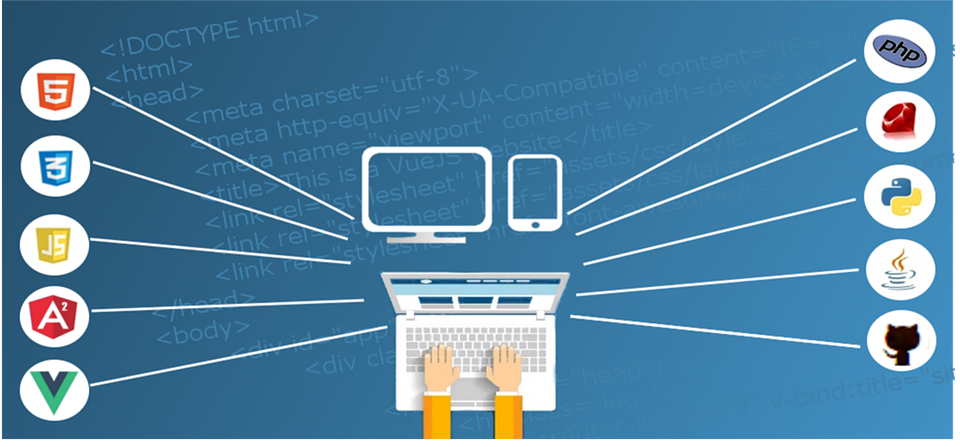
Website Development
Website development is a broad field encompassing various aspects such as design, coding, and maintenance of websites. Here’s a breakdown of the key components:
1. Planning
- Requirement Analysis: Understand the purpose of the website, target audience, and main goals.
- Site Map: Organize the structure and hierarchy of pages.
- Wireframes and Mockups: Create visual guides to represent the skeletal framework of the website.
2. Design
- User Experience (UX): Focus on the overall feel of the website and how users will interact with it.
- User Interface (UI): Design the visual elements like layout, color schemes, typography, and imagery.
3. Development
- Frontend Development: Use HTML, CSS, and JavaScript to create the visual part of the website that users interact with.
- Backend Development: Use server-side languages like PHP, Python, Ruby, or Node.js to handle database interactions, user authentication, and server logic.
- Database Management: Set up databases using SQL or NoSQL solutions to store and retrieve data.
4. Testing
- Functionality Testing: Ensure all features work as expected.
- Usability Testing: Make sure the website is user-friendly.
- Compatibility Testing: Check the website’s performance across different browsers and devices.
- Performance Testing: Assess the website’s speed and load times.
5. Deployment
- Hosting: Choose a hosting provider to make the website accessible on the internet.
- Domain Name: Register a domain name for the website.
- Version Control: Use tools like Git to manage changes and collaborate with other developers.
6. Maintenance
- Content Updates: Regularly update the content to keep it fresh and relevant.
- Security Updates: Apply patches and updates to protect the website from vulnerabilities.
- Performance Monitoring: Continuously monitor and optimize the website’s performance.
Technologies and Tools
- Frontend: HTML, CSS, JavaScript, frameworks like React, Angular, or Vue.js.
- Backend: Node.js, Django, Ruby on Rails, Laravel.
- Databases: MySQL, PostgreSQL, MongoDB, Firebase.
- Version Control: Git, GitHub, GitLab, Bitbucket.
- Design Tools: Adobe XD, Figma, Sketch.
Best Practices
- Responsive Design: Ensure the website works well on all devices.
- SEO Optimization: Optimize the website for search engines.
- Accessibility: Make the website accessible to people with disabilities.
- Clean Code: Write maintainable and scalable code.
- Security: Implement security measures to protect user data.
Trends
- Progressive Web Apps (PWAs): Combine the best of web and mobile apps.
- Single Page Applications (SPAs): Create dynamic and fast user experiences.
- Serverless Architecture: Use cloud services to handle backend logic.
- Artificial Intelligence (AI) and Machine Learning (ML): Enhance user experience with intelligent features.

